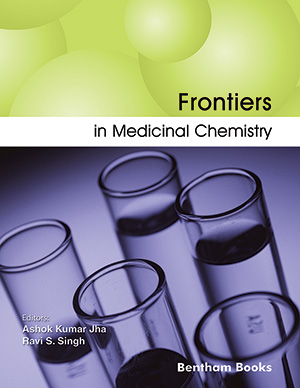[1]
Singh, A.K.; Gupta, R.; Ghosh, A.; Misra, A. Diabetes in COVID-19: Prevalence, pathophysiology, prognosis and practical considerations. Diabetes Metab. Syndr., 2020, 14(4), 303-310.
[2]
Melnikova, L.; Kulikov, A.; Georgiev, P. Interactions between. MGG Mol. Gen. Genet., 1996, 252(3), 230.
[3]
Velavan, T.P.; Meyer, C.G. The COVID-19 epidemic. Trop. Med. Int. Health, 2020, 25(3), 278-280.
[4]
Yang, J.; Zheng, Y.; Gou, X.; Pu, K.; Chen, Z. Prevalence of comorbidities and its effects in patients infected with SARS-CoV-2. Int. J. Infect. Dis., 2020, 94(April), 91-95.
[5]
Huang, C.; Wang, Y.; Li, X.; Ren, L.; Zhao, J.; Hu, Y. Clinical features of patients infected with 2019 novel coronavirus in Wuhan, China. Lancet, 2020, 395(10223), 497-506.
[6]
Nayak, J.L.; Fitzgerald, T.F.; Richards, K.A.; Yang, H.; Treanor, J.J.; Sant, A.J. CD4+ T-cell expansion predicts neutralizing antibody re-sponses to monovalent, inactivated 2009 pandemic influenza A(H1N1) virus subtype H1N1 vaccine. J. Infect. Dis., 2013, 207(2), 297-305.
[7]
Liu, Q.; Wang, J.; Kang, S.A.; Thoreen, C.C.; Hur, W.; Ahmed, T. Discovery of 9-(6-aminopyridin-3-yl)-1-(3-(trifluoromethyl) phe-nyl)benzo[ h ][1,6]naphthyridin-2(1 H)-one (torin2) as a potent, selective, and orally available mammalian target of rapamycin (mTOR) inhibitor for treatment of cancer. J. Med. Chem., 2011, 54(5), 1473-1480.
[8]
Yao, B.; Zheng, D.; Liang, S.; Zhang, C. Conformational B-cell epitope prediction on antigen protein structures: A review of current algo-rithms and comparison with common binding site prediction methods. PLoS One, 2013, 8(4), 22-25.
[9]
Parker, J.M.R.; Guo, D.; Hodges, R.S. New hydrophilicity scale derived from high-performance liquid chromatography peptide retention data: Correlation of predicted surface residues with antigenicity and X-ray-derived accessible sites. Biochemistry, 1986, 25(19), 5425-5432.
[10]
Chakraborty, C.; Sharma, A.R.; Bhattacharya, M.; Sharma, G.; Lee, S.S. Immunoinformatics approach for the identification and characteriza-tion of T cell and B cell epitopes towards the peptide-based vaccine against SARS-CoV-2. Arch. Med. Res., 2021, 1-9.
[11]
Emini, E.A.; Hughes, J.V.; Perlow, D.S.; Boger, J. Induction of hepatitis A virus-neutralizing antibody by a virus-specific synthetic pep-tide. J. Virol., 1985, 55(3), 836-839.
[12]
Yin, D.; Li, L.; Song, X.; Li, H.; Wang, J.; Ju, W. A novel multi-epitope recombined protein for diagnosis of human brucellosis. BMC Infect. Dis., 2016, 16(1), 1-8.
[13]
Oliveira, S.C.; de Magalhães, M.T.Q.; Homan, E.J. Immunoinformatic analysis of SARS-CoV-2 nucleocapsid protein and identification of COVID-19 vaccine targets. Front. Immunol., 2020, 11(July), 1-10.
[14]
Larsen, M.V.; Lundegaard, C.; Lamberth, K.; Buus, S.; Lund, O.; Nielsen, M. Large-scale validation of methods for cytotoxic T-lymphocyte epitope prediction. BMC Bioinformatics, 2007, 8, 1-12.
[15]
Chung, M.; Bernheim, A.; Mei, X.; Zhang, N.; Huang, M.; Zeng, X. CT imaging features of 2019 novel coronavirus (2019-NCoV). Radiology, 2020, 295(1), 202-207.
[16]
Chen, H.Z.; Tang, L.L.; Yu, X.L.; Zhou, J.; Chang, Y.F.; Wu, X. Bioinformatics analysis of epitope-based vaccine design against the novel SARS-CoV-2. Infect. Dis. Poverty, 2020, 9(1), 1-10.
[17]
Ahmad, B.; Ashfaq, U.A. Rahmanq, M ur; Masoud, M.S.; Yousaf, M.Z. Conserved B and T cell epitopes prediction of ebola virus glyco-protein for vaccine development: An immuno-informatics approach. Microb. Pathog., 2018, 2019(132), 243-253.
[18]
Stephens, H.A.F.; Klaythong, R.; Sirikong, M.; Vaughn, D.W.; Green, S.; Kalayanarooj, S. HLA-A and -B allele associations with second-ary dengue virus infections correlate with disease severity and the infecting viral serotype in ethnic Thais. Tissue Antigens, 2002, 60(4), 309-318.
[19]
Nguyen, A.; David, J.K.; Maden, S.K.; Wood, M.A.; Weeder, B.R.; Nellore, A. Human leukocyte antigen susceptibility map for SARS-CoV-2. medRxiv, 2020, 94(13), 1-12.
[20]
Lange, J.; Baakman, C.; Pistorius, A.; Krieger, E.; Hooft, R.; Joosten, R.P. Facilities that make the PDB data collection more powerful. Protein Sci., 2020, 29(1), 330-344.
[21]
Kearse, M.; Moir, R.; Wilson, A.; Stones-Havas, S.; Cheung, M.; Sturrock, S. Geneious Basic: An integrated and extendable desktop soft-ware platform for the organization and analysis of sequence data. Bioinformatics, 2012, 28(12), 1647-1649.
[22]
Muthusamy, K.; Gopinath, K.; Nandhini, D. Computational prediction of immunodominant antigenic regions & potential protective epitopes for dengue vaccination. Indian J. Med. Res., 2016, 144(OCTOBER), 587-591.
[23]
Swain, A.D. Comparative evaluation of methods for human reliability analysis. 1989, 04, 517.
[24]
Smirnov, V.; Warnow, T. MAGUS: Multiple sequence Alignment using Graph clUStering. Bioinformatics, 2020, 2(November), 1-7.
[25]
Mishra, S. Designing of cytotoxic and helper T cell epitope map provides insights into the highly contagious nature of the pandemic novel coronavirus SARS-CoV2. Soc. Open Sci., 2020, 7201141
[26]
Stranzl, T.; Larsen, M.V.; Lundegaard, C.; Nielsen, M. NetCTLpan: Pan-specific MHC class I pathway epitope predictions. Immunogenetics, 2010, 62(6), 357-368.
[27]
Baruah, V.; Bose, S. Immunoinformatics-aided identification of T cell and B cell epitopes in the surface glycoprotein of 2019-nCoV. J. Med. Virol., 2020, 92(5), 495-500.
[28]
Mulpuru, V.; Mishra, N. Immunoinformatic based identification of cytotoxic T lymphocyte epitopes from the Indian isolate of SARS-CoV-2. Nature (Scientifc Reports), 2021, 11, 4516.
[29]
Dhanda, S.K.; Vaughan, K.; Schulten, V.; Grifoni, A.; Weiskopf, D.; Sidney, J. Development of a novel clustering tool for linear peptide sequences. Immunology, 2018, 155(3), 331-345.
[30]
Bhattacharya, M.; Sharma, A.R.; Patra, P.; Ghosh, P.; Sharma, G.; Patra, B.C. Development of epitope-based peptide vaccine against novel coronavirus 2019 (SARS-COV-2): Immunoinformatics approach. J. Med. Virol., 2020, 92(6), 618-631.
[31]
Perales-Linares, R.; Navas-Martin, S. Toll-like receptor 3 in viral pathogenesis: Friend or foe? Immunology, 2013, 140(2), 153-167.
[32]
Jayaraj, J.M.; Reteti, E.; Kesavan, C.; Muthusamy, K. Structural insights on vitamin D receptor and screening of new potent agonist mole-cules: Structure and ligand-based approach. J. Biomol. Struct. Dyn., 2020, 1102.






























